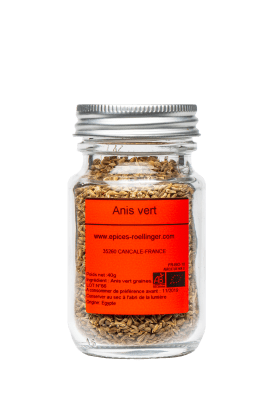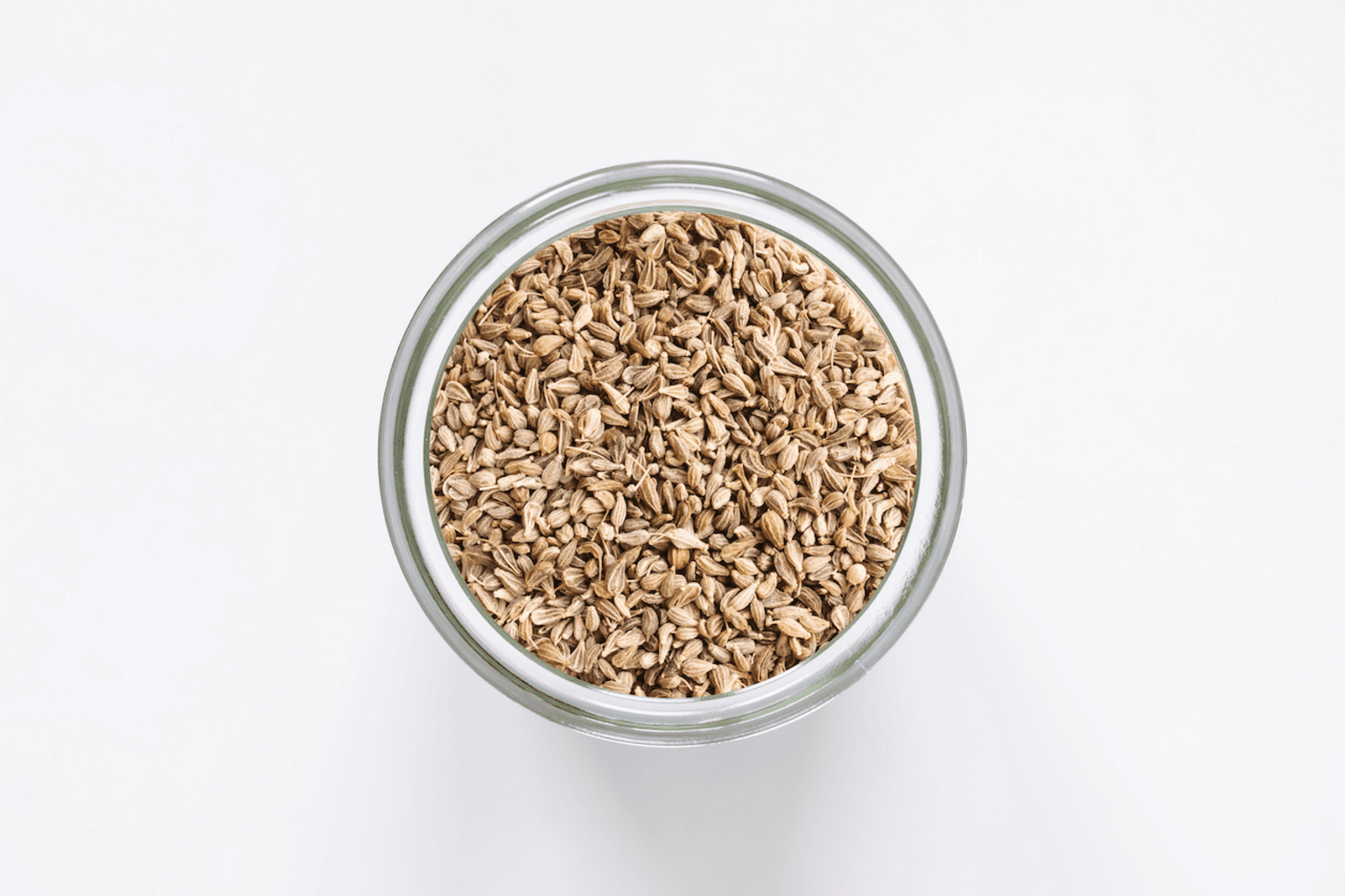Green Anise

Recommendations
-
Allergens
Absent, except for cross-contamination.
May contain traces of sesame, celery, mustard, soy. - Origin Egypt
- Storage / Use In a cool, dark, dry place.
Olivier Rœllinger's words
This is one of the spices I use in the Poudre Défendue blend which I created to season fruit salads.
Story
Green anise has long been used as a spice on several continents. The Chinese believed the plant was holy and the Greeks used the seeds for medicinal purposes. Romans added green aniseed to sweetened wines, meat sauces, and bread. They also used them as a remedy for bad breath. During the Middle Ages, green aniseed was a popular flavoring for biscuits/cookies, sweets, and liqueurs. It is one of the spices used in French spice cake (pain d’épice) blends.
Today, green aniseed is a favorite among pastry chefs. It makes its way into .pastries, pies, and ice creams. It also reigns supreme in anise-flavored alcoholic beverages such as anis, anisette, raki, ouzo, and arak. …
Green aniseed also pairs well with seafood (fish soup especially) and soufflés.
